At this point in time, it is safe to assume that despite the influx of new technology, email is a no-brainer medium for business communication. It isn’t difficult to understand why – emails are quick to write and easy to send while still maintaining formal etiquette.
Yet, writing email responses does not always come naturally to everyone. Let alone grammatical errors or typos, often, people don’t know how to respond effectively, especially in the case of mass emails.
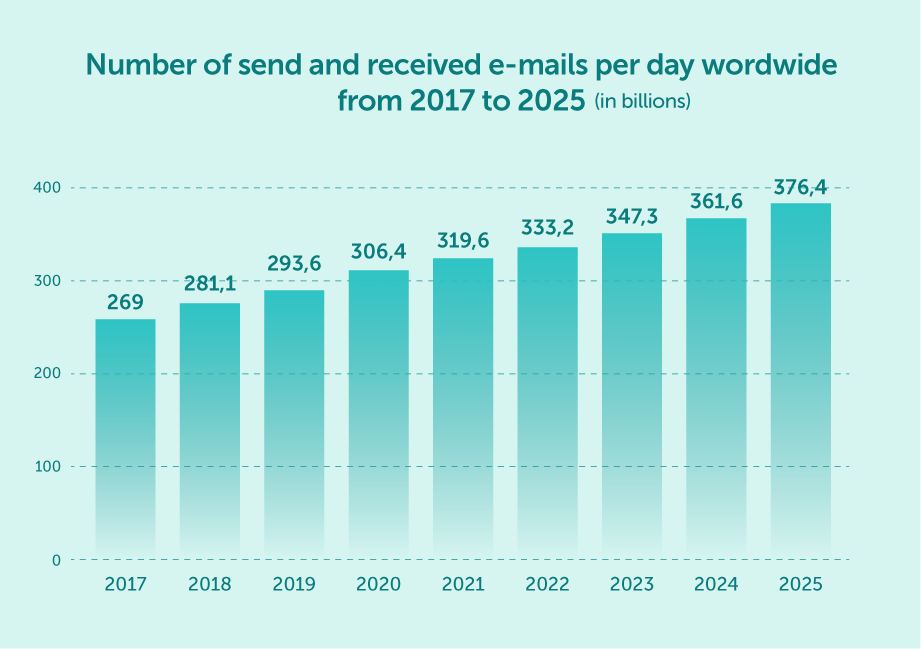
source: Statista
Fortunately for you, we’ve completed a list of email writing tips to help you craft effective and appropriate responses to your recipients. No matter whether you answer job search inquiries or address customers, here’s how you can make your email responses stand out.
This goes without saying – responding in a timely manner is crucial in maintaining a fruitful conversation. In most cases, the person on the other side of the email thread would expect a response within 24 hours. This doesn’t mean you should respond right after you read the email, but if you manage to do this faster than expected, it could help build a stronger rapport with your recipients.
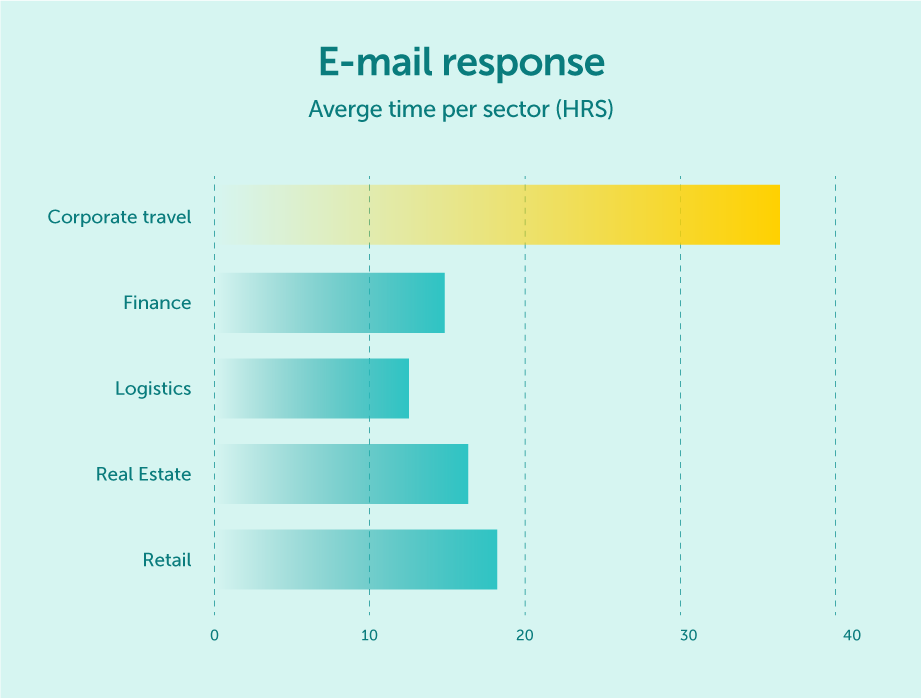
According to a study by HiverHQ, the average response time for a potential customer emailing a corporate business is 36 hours.
However, when it comes to the right time to send a follow-up email, you should also be mindful of the recipient’s schedule. For instance, if you sent your previous message in the morning, but the recipient answered late in the night, you should wait until the next day to reply.
On top of that, if you’re writing to a customer from an international location, take into consideration their time zone and if they’re available in the time frame you have set. This way, you know your mail won’t come across as intrusive.
Maximize your email deliverability and security with EmailLabs!
No matter what the nature of your email is, it’s important to sound professional in your responses. Using a polite and respectful tone can have a significant impact on how your email is perceived and can make a good impression on the person you are writing to.
In your response, you should also be careful with your wording. Avoid using slang or casual phrases, and use proper grammar and punctuation at all times. Always include salutations, such as Dear or Hello, at the beginning of your email, and sign off with closing remarks, such as Best regards or Kind Regards, before your email signature.
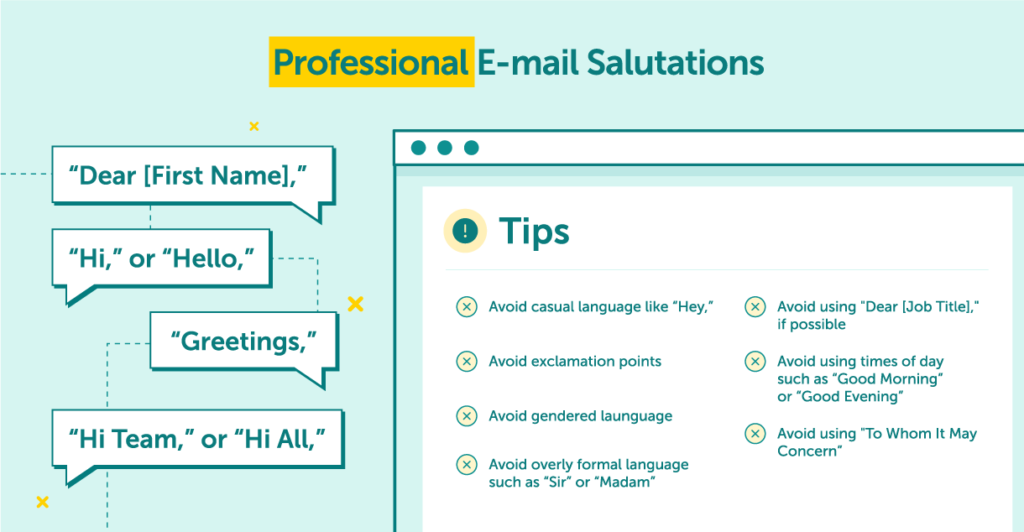
We’ve provided some email salutation examples, that illustrate how to greet in an email formal. Still, we’d also urge you to use your judgment too.
While those may not seem as much, they can create a more impactful image of your company. As such, your recipients – and hopefully future customers – will find you more reliable and trustworthy if you remain consistent throughout the course of the conversation.
When responding, it’s vital that you remind the sender of the context surrounding the email. This can be accomplished by including a short summary of what was discussed previously in the thread.
It doesn’t have to explain everything, as that could be considered patronizing. Rather, you should mention the general idea to refresh the recipient’s memory and let them know you’ve been paying attention to the messages.
A short answer to the question they asked, or a brief summary of the action you agreed on, will be enough to add context.
When speaking about email etiquette and the concerns most people have about writing effective emails, the concept of emotion often gets overlooked – and as a result, they have trouble sending something more than cold messages stripped of any feeling.
However, evoking emotion in your email response is as important as following grammar rules and using formal words. The relationship between the sender and the recipient is nothing short of in-person communication, and it should be treated as such.
The emails you write don’t need to sound like overly personal conversations, but a hint of emotion can make them seem more sincere and friendly. For example, showing that you are genuinely interested in the conversation or that you hope the recipient’s business venture is going well can make your emails more memorable.
People undermine the importance of positive feedback and the response it deserves. When someone sends you a note of appreciation, take the time to thank them for their kind words.
Your response should be adjusted to the sender of the original message. If they are casual clients, you can answer with a light tone and point them to a relevant blog post. If your recipient is a professional, you can reply with some valuable insights or advice concerning marketing or business strategy.
Either way, make sure to thank the person for their feedback and let them know that you value it. It will only help to strengthen your relationship with your customer base and make them more likely to come back in the future.
With all of the above, you cannot overlook the importance of authenticity. You should be genuine when you respond and avoid using a script or template, as it can come off as insincere.
Your response email should be tailored to the individual and reflect your own ability to address the recipient in a personal and meaningful way. The goal is to make them feel like you understand their message and that it has been taken seriously.
Your response should be unique – or at least it should sound so, even if you respond to multiple people with the same issue. This way, your recipients won’t feel like they are being dismissed with a generic answer.
Email etiquette does not allow you to push your clients toward a decision, but if you are careful enough in your response, you can talk about the urgency of your request without sounding too pushy.
If there is a deadline for responding, let them know – a gentle reminder about your concerns might be enough to get the attention you need.
When talking about getting a certain product or signing up for a service, you can remind them of the benefits they will get if they act on your offer, forward a relevant article to create the feeling of peer pressure, or propose a free trial. Encouragement and subtlety are the keys here.
The response you deliver should address the recipient and their concerns. We’ve already mentioned that referring to them by their name and including a summary of the last few messages can make your response more personalized. Now, you should also focus on their particular needs.
You should try to be as helpful as you can and provide them with the most accurate answer. Depending on the severity of the issue, you may have to forward their request to the right person or department – provide them with the contact of that individual and explain why you can’t help.
When you’re able to provide them with the help they are looking for, make sure to emphasize that you have done everything in your power to assist. As you put your customer’s needs first, you let them know that their problems are just as important to you.
Maximize your email deliverability and security with EmailLabs!
Apart from the content of the message, you should also pay attention to its technical aspects that concern both the message and deliverability of your emails. This includes formatting, attachments, and other details that can influence the effectiveness of the message.
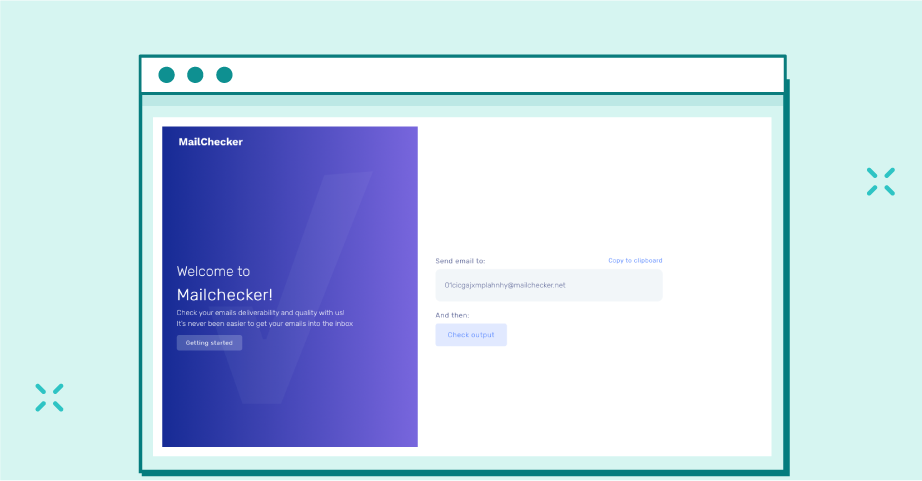
The Mailchecker.net tool is completely free, with no credit card or monthly subscription required.
Mailchecker.net allows you to easily rate emails from your browser while giving you tips on what to improve to ensure higher email deliverability. Even though Mailchecker.net was created primarily with marketing emails in mind, it is also well suited for verifying other types of email, including transactional ones.
You probably have a few branded templates for your marketing emails, and you should not forget to use one in your customer response emails, too. However, instead of sending a fully-fledged transactional email (like you would after a completed purchase), you should rather use a more simplistic template with enough space for your message.
Typically, your response email should contain the same subject line as the previous messages, tagged with a “RE:” prefix. This not only makes it easier to recognize the thread but also helps your customer find the right email quicker. If you address multiple contacts in the same message, use a more descriptive subject, also using the “RE:” tag, for example, RE: Concerns about the order delivery.
When you respond to multiple customers with the same issue, it’s best to use BCC – this way, none of the recipients will know that you have sent a mass email. But when you talk about a certain issue with a group of people, you should use CC to let them all be aware that this email exchange is taking place and help them find relevant addresses. While it is a basic concept, some people still neglect it.
There aren’t many things worse than a reader not being able to find the information that is needed. Make sure you attach relevant files or provide links to them when necessary.
This may not always be applicable, but adding a concise CTA can help you reach the desired goal more quickly. If you need your customer to confirm something or provide additional information, let them know at the end of your email.
It is easy to overlook typos and other minor mistakes when you respond to emails quickly. This is especially true for those who are used to chat-like communication. Yet, those small errors can make your message look unprofessional and careless.
That’s why it’s always a good measure to proofread all of your emails before sending them. You can use automated tools like Grammarly to help you spot any mistakes and correct them quickly.
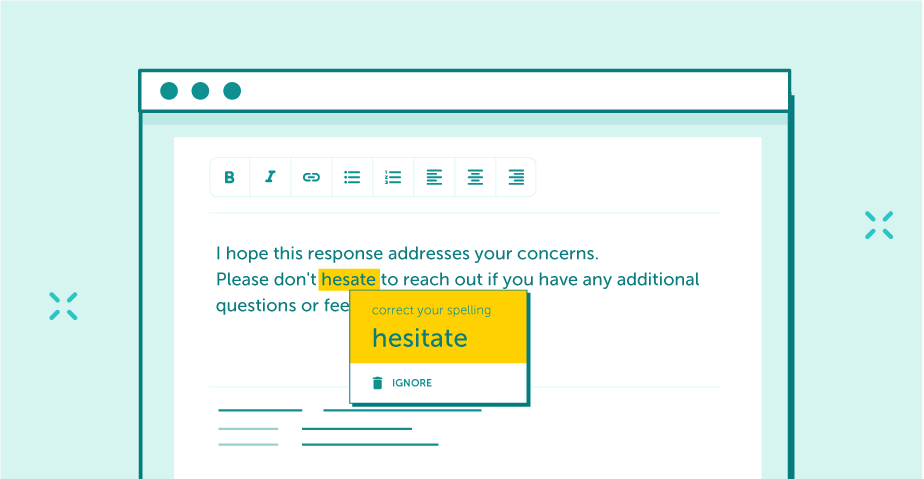
That typo or grammar goof you just made in an email might make a bad impression.
On top of that, when you’re rereading your email, you may come across something that you’d like to write better or add more context to. As a result, you don’t just make sure that your email is free of typos but also more informative and effective.
The way you respond to your email recipients is an integral part of your communication with them. It is essential to be mindful of how you come across, as well as the grammar and spelling of the message. You should also be aware of how you can make your email stand out by adding context, evoking emotion, and providing a clear call to action.
The most important thing is to be authentic – in doing so, you invite your recipient to have a meaningful exchange with you, and the result of it is a friendly relationship between the two parties. At the end of the day, the recipient is able to see that you’ve taken the time and effort to craft an adequate response, which will only help your business in the long run.
Gmail has announced significant changes in the requirements for email senders to maintain a good reputation and proper classification of messages in user inboxes starting from February 1, 2024....
Vercom S.A. public joint-stock company to which the EmailLabs project belongs, has been assessed and certified to be compliant with the ISO/IEC 27001 and ISO/IEC 27018 standards. The Vercoms’...
The increasing number of phishing attacks each year, and the projection that this trend will continue to escalate, aren’t likely to astonish anyone. This can be attributed, in part,...
Out of all the things that can go wrong when sending out marketing emails, having your emails end up in the recipient’s spam folder is arguably the most dreaded...
Email Authentication, Security
DMARC is an email authentication protocol that is designed to give domain owners the ability to protect their domain from unauthorized use, commonly known as email spoofing. Spoofing occurs...
With the emergence of the Covid-19 pandemic, many brands have been challenged to adapt in a short period to the changed reality and new consumer attitudes. That meant reorganizing...
Have you ever sent an email in haste and immediately wished you hadn’t? It happens more often than we’d like to admit. If you ever find yourself in this...
One safe and easy way to keep track of your digital interactions is to save emails as PDFs. However, do you know the best ways to easily turn your emails into PDF files? In this article, we’ll look into the different ways you can do to turn your emails into accessible PDF files. Let’s start! Key Takeaways To save emails...
Sending large files online can sometimes feel like maneuvering through a maze with unexpected twists and turns. The frustration of hitting attachment size limits or dealing with slow uploads...
Have you ever sent an email in haste and immediately wished you hadn’t? It happens more often than we’d like to admit. If you ever find yourself in this...
One safe and easy way to keep track of your digital interactions is to save emails as PDFs. However, do you know the best ways to easily turn your emails into PDF files? In this article, we’ll look into the different ways you can do to turn your emails into accessible PDF files. Let’s start! Key Takeaways To save emails...
Sending large files online can sometimes feel like maneuvering through a maze with unexpected twists and turns. The frustration of hitting attachment size limits or dealing with slow uploads...
Are you a bit baffled by email protocols like IMAP, POP3, and SMTP? Have no fear – this article is here to explain it all. If you have ever...
In 2024, global providers like Gmail and Yahoo have implemented a series of changes, primarily targeting bulk senders. These changes, already in effect, are part of a continuous update...
In the face of dynamic technological advancements and increasingly sophisticated cyber threats, ensuring network security has become crucial. Dozen security incidents present a challenge that we cannot afford to...
Google and Yahoo's Requirements
2024 marks a turning point in the fast-paced world of email deliverability, as this is the year when Google and Yahoo updated their sender requirements. With the enforcement period...
Best practices, Email Marketing
B2B email marketing – it’s a term you’ve likely heard before, but what does it really entail? And, more importantly, how can it be done effectively? In this article,...
Deliverability, Sending Reputation
Email sender reputation is one of the most important factors that can determine whether your emails reach the intended recipient or not. So, what is the email sender reputation,...